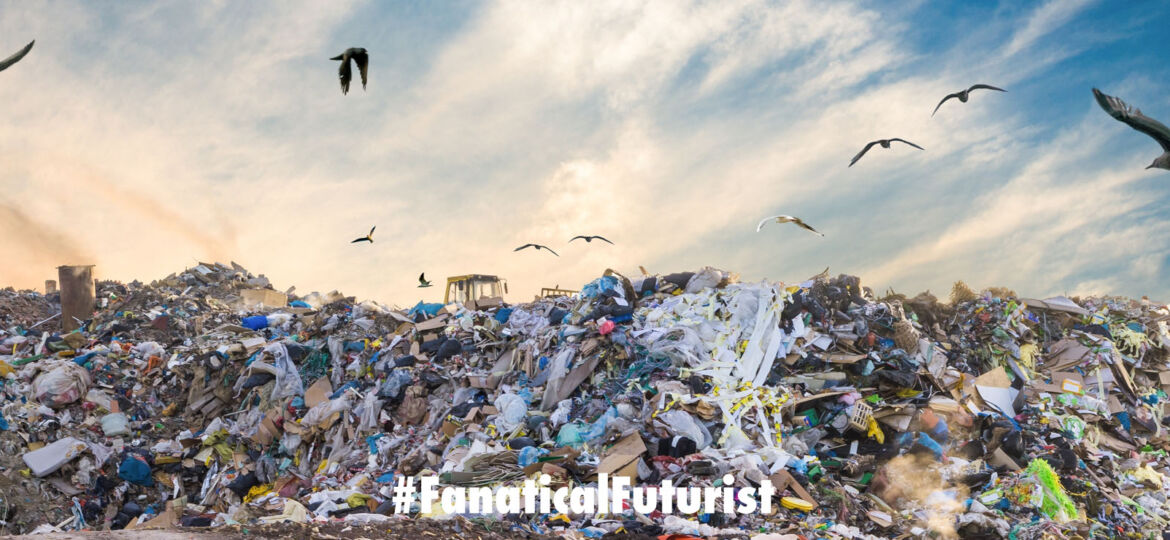
WHY THIS MATTERS IN BRIEF
Graphene is an amazing material that could transform almost every industry on Earth, from communications and computing, to energy and transportation, but manufacturing it has been problematic so far.
 Interested in the Exponential Future? Connect, download a free E-Book, watch a keynote, or browse my blog.
Interested in the Exponential Future? Connect, download a free E-Book, watch a keynote, or browse my blog.
I cover hundreds of exponential technologies, but frankly, when it comes to “helping save the planet” and especially recycling of almost any kind my feelings are that there’s too little activity. That said though we do have pathways to reduce global greenhouse gas emissions by over 70 percent thanks to new food production techniques including lab grown meats and vertical farms, green concrete and self-replicating bricks, amazingly efficient renewable energy technologies, and the electrification of everything from aircraft to cars. We’ve also made advances in creating infinitely recyclable plastics, and new carbon capture materials – all of which help move that Doomsday Clock dial further away from midnight.
However, when it comes to keeping this planet of ours green and, well, alive, all these things are only part of the solution – culture shifts are needed to. After all, it’s no good having all these new fancy technologies if they don’t get used or deployed. And now there’s another recycling technology that’s caught my eye and it’s an interesting one because not only does it recycle old junk, literally, but it then turns it into the wonder material graphene which in itself is being used to develop everything from terahertz computer chips and amazing single step water filtration systems that let you drink sewer water… all the way through to space elevators and AI’s made of glass – if you’re into that sort of thing.
The advance from the Rice University lab of James Tour can reportedly convert a ton of coal, food waste or plastic into graphene for a fraction of the cost used by other bulk graphene-producing methods.
“This is a big deal,” Tour said in a statement. “The world throws out 30 per cent to 40 per cent of all food, because it goes bad, and plastic waste is of worldwide concern. We’ve already proven that any solid carbon-based matter, including mixed plastic waste and rubber tyres, can be turned into graphene.” The research is published in Nature.
“With the present commercial price of graphene being $67,000 to $200,000 per ton, the prospects for this process look superb,” he said, adding that 0.1 per cent of flash graphene in the cement used to bind concrete could lessen its environmental impact by a third.
“By strengthening concrete with graphene, we could use less concrete for building, and it would cost less to manufacture and less to transport,” he said. “Essentially, we’re trapping greenhouse gases like carbon dioxide and methane that waste food would have emitted in landfills. We are converting those carbons into graphene and adding that graphene to concrete, thereby lowering the amount of carbon dioxide generated in concrete manufacture. It’s a win-win environmental scenario using graphene.”
“Turning trash to treasure is key to the circular economy,” said co-corresponding author Rouzbeh Shahsavari. “Here, graphene acts both as a 2D template and a reinforcing agent that controls cement hydration and subsequent strength development.”
Flash Joule heating for bulk graphene, developed in the Tour lab by Rice graduate student and lead author Duy Luong, is claimed to improve upon techniques like exfoliation from graphite and chemical vapour deposition on a metal foil that require much more effort and cost to produce small quantities of graphene.
The process also produces turbostratic graphene, with misaligned layers that are easy to separate. “A-B stacked graphene from other processes, like exfoliation of graphite, is very hard to pull apart,” Tour said. “The layers adhere strongly together.
Turbostratic graphene is easier to work with as the layers come apart in solution or upon blending in composites.
“That’s important, because now we can get each of these single-atomic layers to interact with a host composite,” he said.
The flash process happens in a custom-designed reactor that heats material quickly and emits all noncarbon elements as gas. “When this process is industrialised, elements like oxygen and nitrogen that exit the flash reactor can all be trapped as small molecules because they have value,” Tour said.
He said the flash process produces very little excess heat, channelling almost all of its energy into the target. “You can put your finger right on the container a few seconds afterwards,” Tour said. “And keep in mind this is almost three times hotter than the chemical vapour deposition furnaces we formerly used to make graphene, but in the flash process the heat is concentrated in the carbon material and none in a surrounding reactor.
Tour hopes to produce a kilogram a day of flash graphene within two years, and well, who knows, maybe we can save the planet by that time and all be enjoying the thrill of social media on turbo charged computer chips…
















